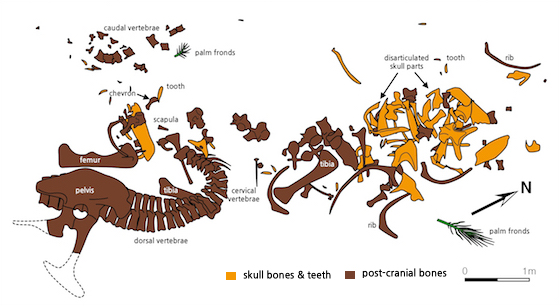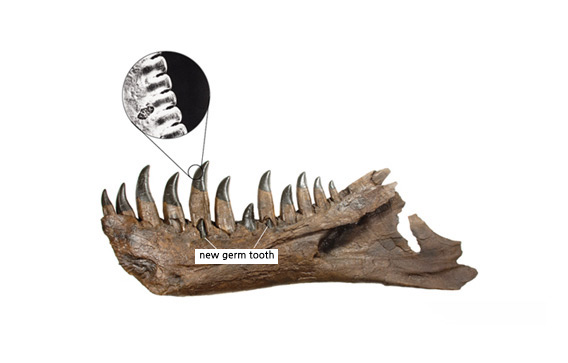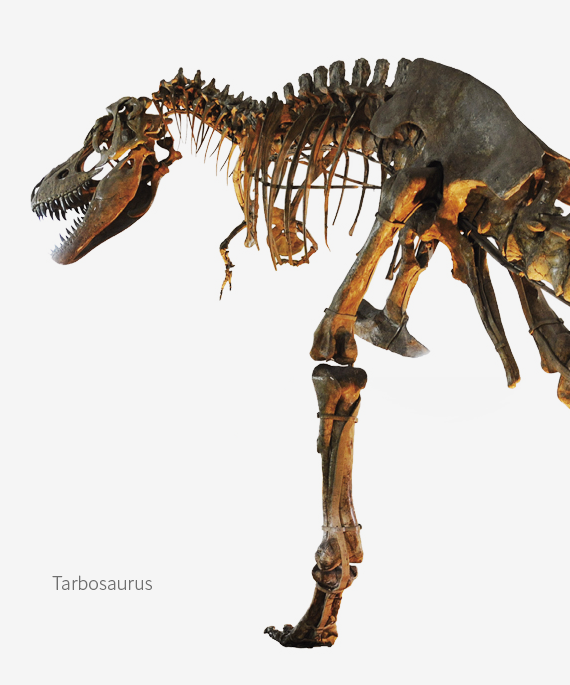Tyrannosaurus
Along with the South American Giganotosaurus (about 14 meters) and the African Carcharodontosaurus (8 to 14 meters), the North American Tyrannosaurus is one of the largest land carnivores in the world with a body length of 10 to 14 meters and a body weight of 4.5 to 7 tons.
The most impressive feature of the Tyrannosaurus is its huge skull which is about 1.5 meters, and its extremely short arm. The skull of the Tyrannosaurus is made up of a combination of many bones, and is very light and durable compared to its size because it has a lot of empty spaces. Each of the about 60 teeth is very thick and sturdy, and the largest is about 30 cm long to the root. With such strong teeth, the skull has greatly developed into a major hunting weapon, and in order to overcome the high height of the center of gravity, the arm became short and lost its role as a weapon.
Their big and strong teeth seem to have been used not only for hunting but for hurting each other during competitions within their own race. This dinosaur has its upper part of the skull broken up, there are traces of teeth penetration in the skull, part of the neck bone is broken and healed, and the ribs have bite marks from other individuals. The scars left on the bones are important clues to their fierce competition for survival.

Preservational factsSketch of BHI 3033 Tyrannosaurus STAN at excavation
The Tyrannosaurus specimen (BHI 3033) exhibited at the Geological Museum has the nickname 'STAN', following the name of the first discoverer. About 70% of the bones were found, and the vertebrae were relatively in place as when they were alive. Unusual is the discovery that the skull was completely disintegrated as if there had been an explosion (in orange). Fortunately, the bones could be preserved with little deformation while being compacted by thick sedimentary strata.

Lower jaw of TyrannosaurusRight dentary and serration of the teeth
The teeth are thick and durable as rock chisels, and the edge of it has a fine sawtooth structure like steak knives, which are also suitable for cutting flesh. Carnivorous dinosaur teeth are often broken or lost during fights or food consumption, so the jaw bone prepares for a lifetime exchange of teeth. The new teeth that come up from the roots push the old and weakened teeth and replace the teeth.

Disarticulated skull parts and the restored skull


Tarbosaurus, a typical large carnivorous dinosaur of Mongolia, was once considered as an ancestor of Tyrannosaurus, but recent research has found it to be a relative with more advanced features (Currie 2003, Currie et al. 2003).